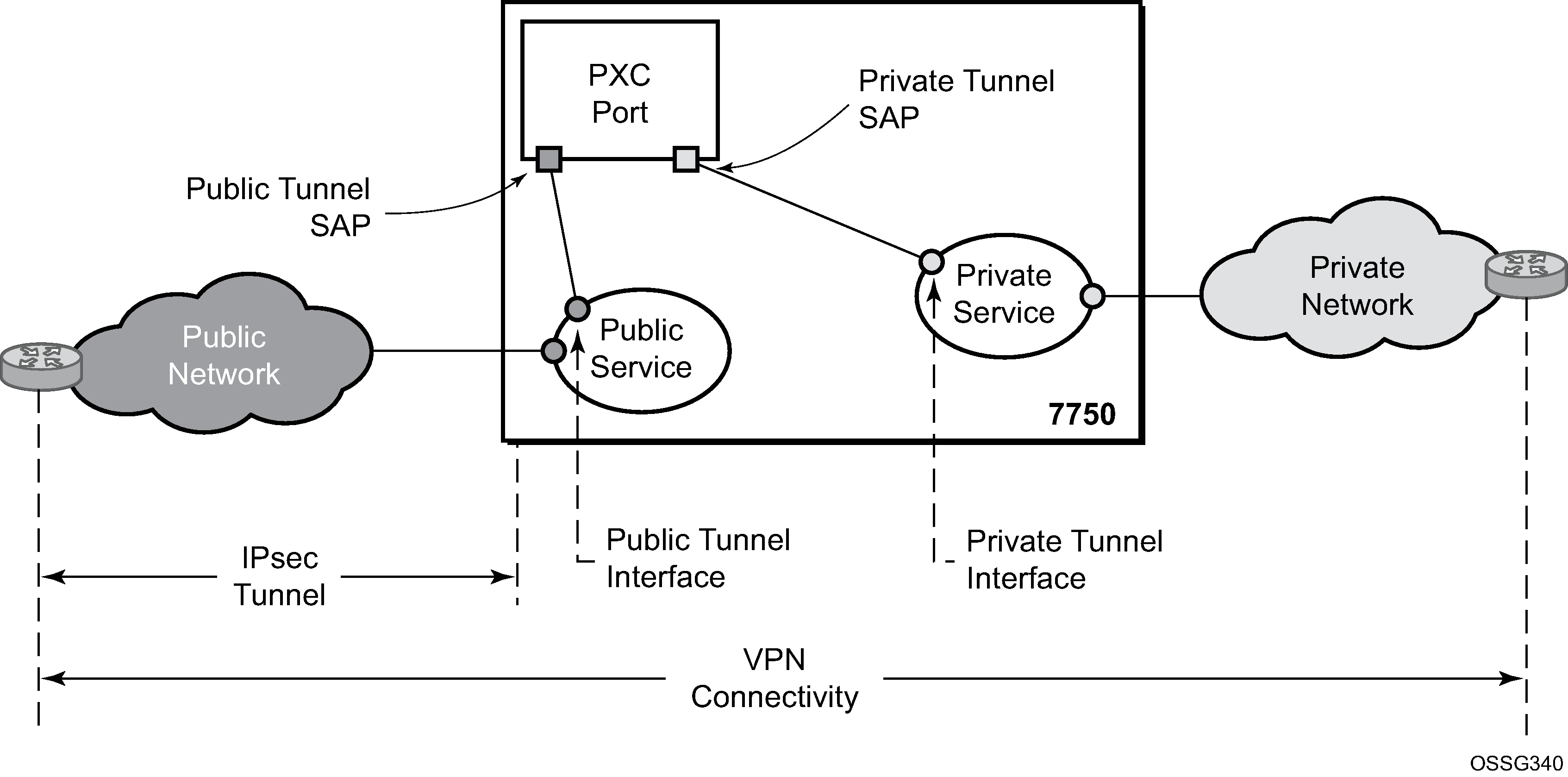This section describes the GRE tunneling feature supported through the use of a Port Cross Connect (PXC) port. In this application, the PXC port functions as a resource module for the system, providing the necessary resources for the GRE encapsulation function. The GRE encapsulation function described here is similar to the GRE tunnel functionality supported through the use of the MS-ISA. In this use case, the MS-ISA is not required.
Figure: GRE deployment using a PXC port example shows an example of a GRE deployment supported inside a 7750 SR router using the PXC element.

In Figure: GRE deployment using a PXC port example, the public network is typically an unsecured network, such as public Internet, over which packets belonging to the private network in the diagram cannot be transmitted natively. Inside the 7750 SR, a public service instance (IES or VPRN) connects to the public network, and a private service instance (typically a VPRN) connects to the private network.
For GRE tunnels using PXC ports, the public and private services must be two different services, and the PXC is the connection between the two services. Traffic from the public network may require authentication and encryption inside an IPsec tunnel to reach the private network. In this way, the authenticity, confidentiality, and integrity of private network access can be enforced. If authentication and confidentiality are not required, then access to the private network may be provided through GRE or IP-IP tunnels.
Traffic flows through PXC-based tunnels in the following ways:
In the upstream direction (public to private), the encapsulated traffic is forwarded to a public tunnel interface if the destination address matches the local or gateway address of a GRE tunnel. As the traffic passes through the PXC port, the tunnel header is removed, the payload IP packet is delivered to the private service, and from there, the traffic is forwarded again based on the destination address of the payload IP packet.
In the downstream direction (private to public), unencapsulated traffic belonging to the private service is forwarded into the tunnel by matching a route with the GRE tunnel as next-hop. The route can be configured statically, learned by running OSPF on the private tunnel interface or by running BGP over the tunnel. After clear traffic is forwarded to the PXC port, it is encapsulated in the GRE header and passed to the public service, and from there, the traffic is forwarded again based on the destination address of the GRE header.